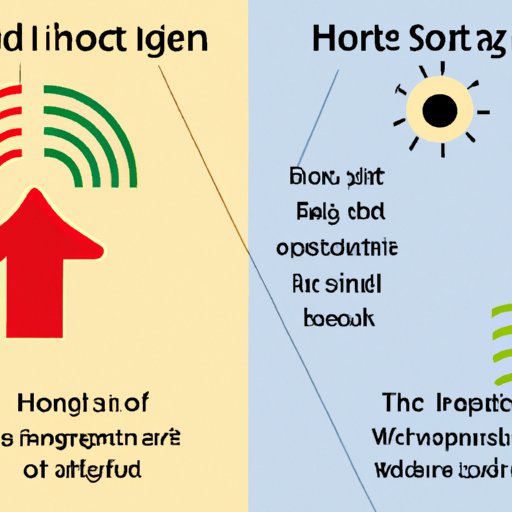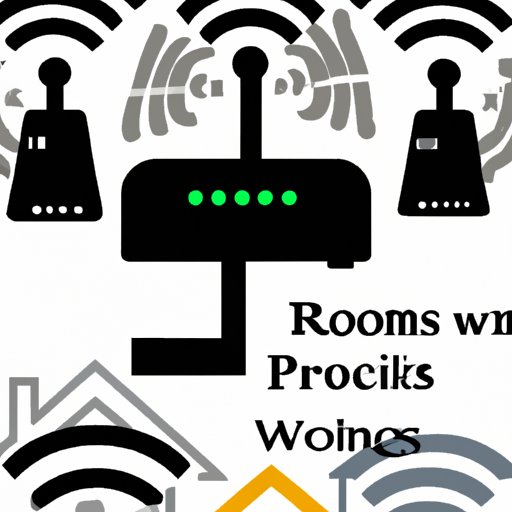Introduction
A hot spot is an area where people can access the internet through a wireless connection. It’s becoming increasingly popular as more and more people use mobile devices such as cell phones, tablets, and laptops to connect to the internet. Hot spots are available in a variety of locations, from coffee shops to libraries to airports. They provide a convenient way for people to stay connected while on the go.

Technical Components of a Hot Spot
In order for a hot spot to work, it must include three key components: a router, an access point, and a modem. The router is responsible for connecting the hot spot to the network, whether it be a cable or DSL connection. The access point is the actual device that broadcasts the signal, allowing people to access the internet. Finally, the modem is what allows the router to connect to the internet in the first place.
These components work together to create the wireless connection that people use to access the internet. The router sends out a signal, which is picked up by the access point. The modem then connects the router to the internet, allowing people to access the web. All of this happens in a matter of seconds, providing users with a fast and reliable connection.
How Users Can Access a Hot Spot
In order to access a hot spot, users will need a device that has wireless capabilities, such as a laptop, tablet, or smartphone. Once the device is in range of the hot spot, users can simply search for available networks and select the one associated with the hot spot. Depending on the type of hot spot, users may need to enter a password or other credentials in order to gain access.

Advantages and Disadvantages of Using a Hot Spot
Using a hot spot has both advantages and disadvantages. One of the major advantages is convenience. Hot spots are available in many locations, making it easy for people to stay connected while on the go. Additionally, hot spots can be used by multiple people at once, making them ideal for group activities such as business meetings or social gatherings.
However, there are some drawbacks to using a hot spot. For example, hot spots tend to be slower than a home or office connection. Additionally, since the connection is shared, users may experience lag or dropped connections if there are too many people using the same hot spot. Finally, since hot spots are public, users should be aware of potential security risks.
Security Measures Taken by Hot Spots
In order to protect users from potential security threats, hot spots employ several measures. The most common is encryption, which scrambles data so that it cannot be intercepted by unauthorized users. Additionally, many hot spots use firewalls to block malicious software and hackers from gaining access to the network.
Overall, these measures help to ensure that users are able to safely and securely access the internet while using a hot spot.

Different Types of Hot Spots
Hot spots come in two main varieties: public and private. Public hot spots are typically free and open to anyone who is within range. Private hot spots require users to enter a password or other credentials in order to gain access. Additionally, there are often costs associated with setting up and maintaining private hot spots.
Impact of Hot Spots on Businesses, Communities, and Individuals
The advent of hot spots has had a significant impact on businesses, communities, and individuals. For businesses, hot spots provide a convenient way for customers to access the internet while in the store, leading to increased sales and customer satisfaction. Communities benefit from hot spots by providing citizens with an easy way to stay connected and access information.
For individuals, hot spots offer a convenient and affordable way to stay connected while on the go. According to a study by the Pew Research Center, “57% of American adults now use a laptop, tablet, or smartphone to access the internet away from home or work.” This illustrates just how important hot spots are for staying connected in today’s digital world.
Conclusion
Hot spots are an invaluable tool for staying connected, especially for those who are always on the go. They provide a convenient and affordable way for people to access the internet in a variety of locations. Additionally, hot spots offer a variety of benefits for businesses, communities, and individuals. While there are some potential security risks, these can be mitigated with proper encryption and firewall measures. Overall, hot spots provide an invaluable service for staying connected in today’s digital world.
(Note: Is this article not meeting your expectations? Do you have knowledge or insights to share? Unlock new opportunities and expand your reach by joining our authors team. Click Registration to join us and share your expertise with our readers.)
